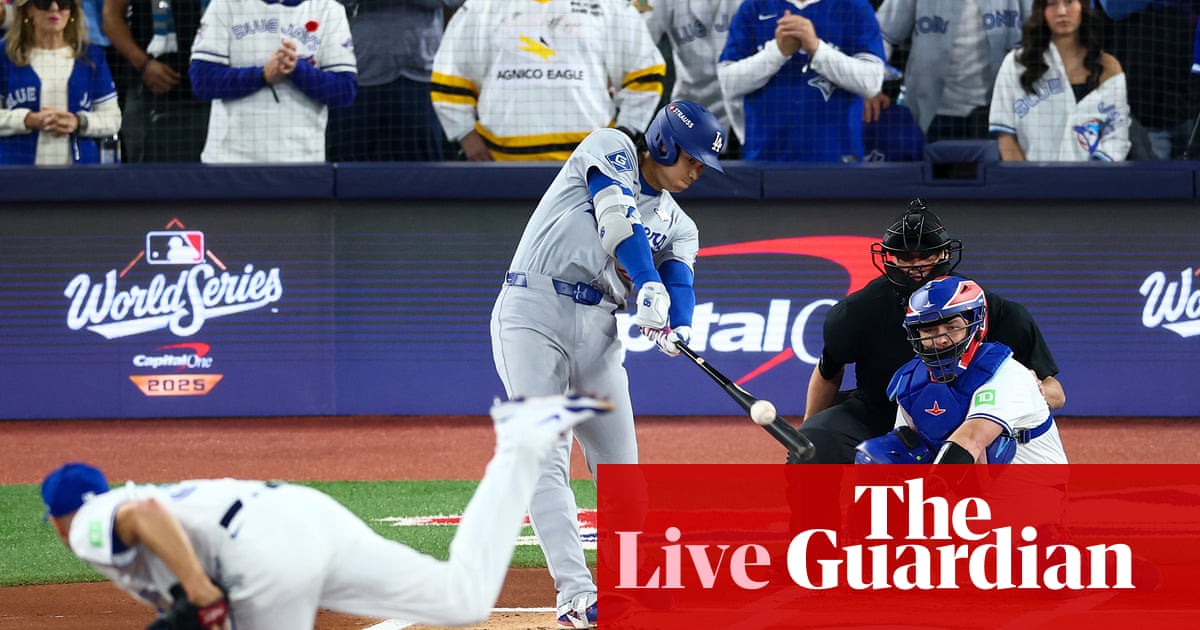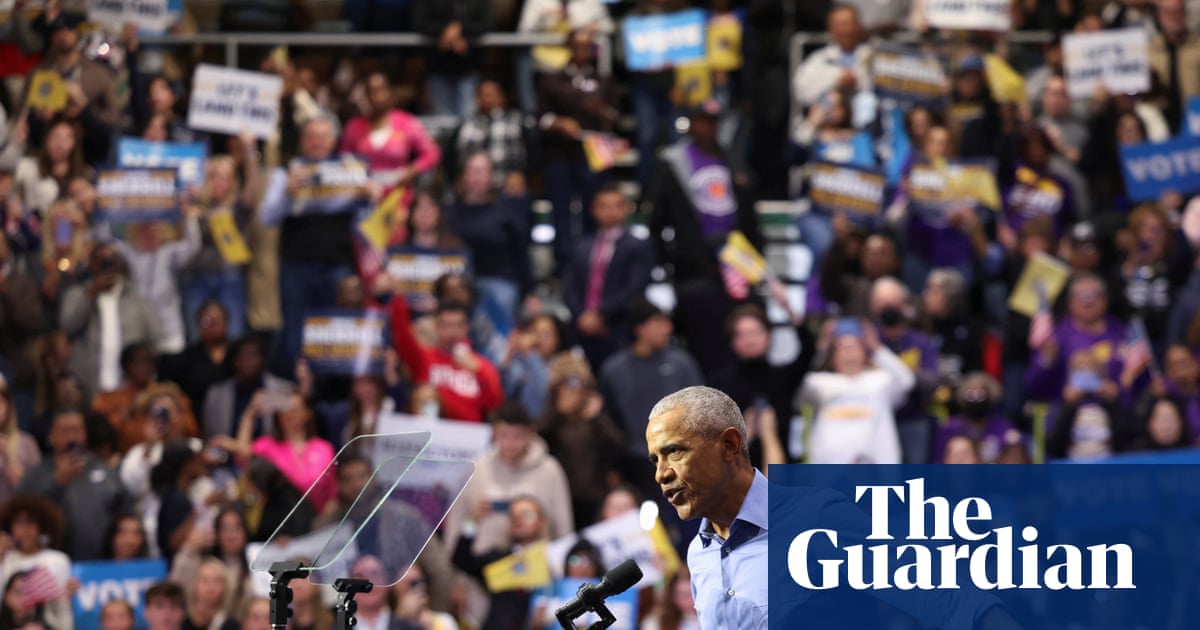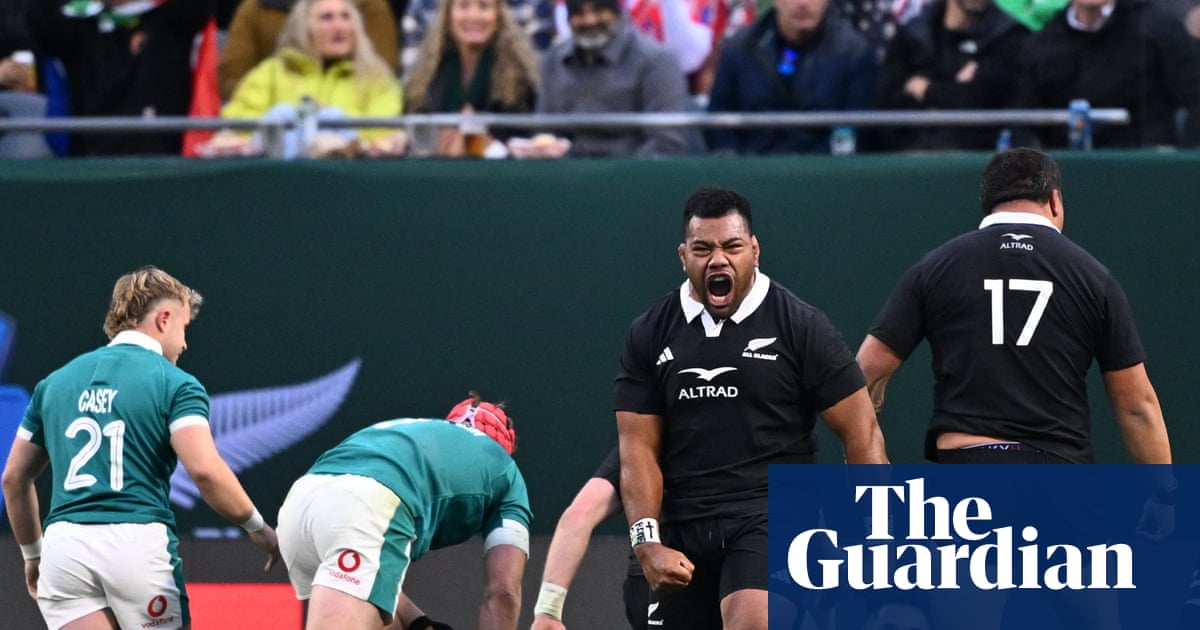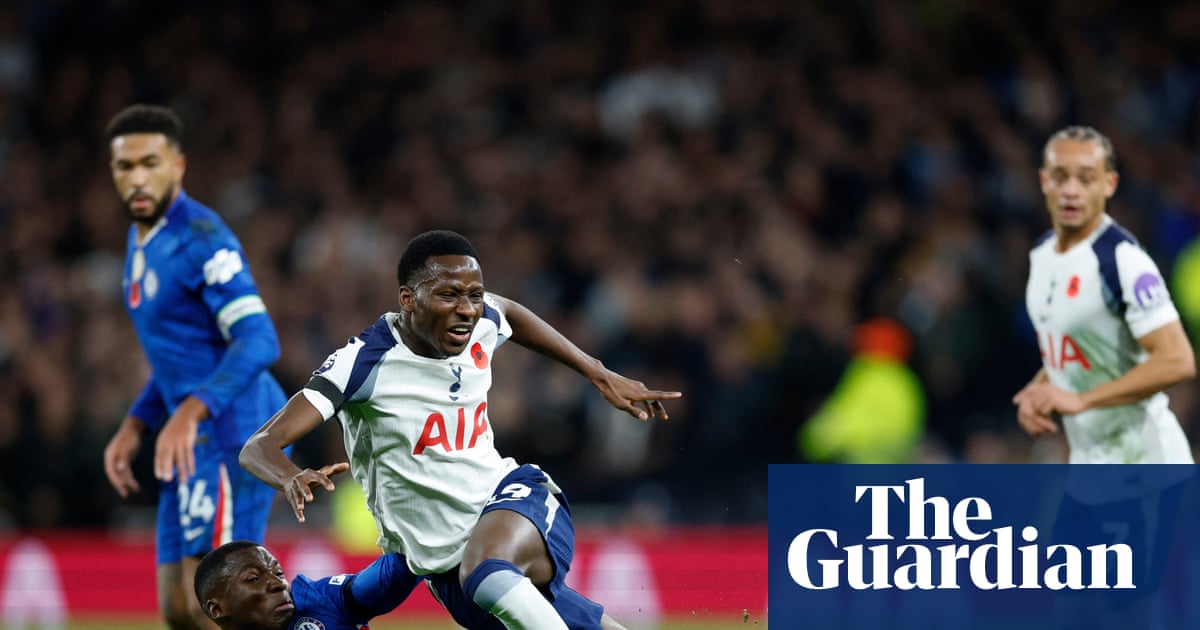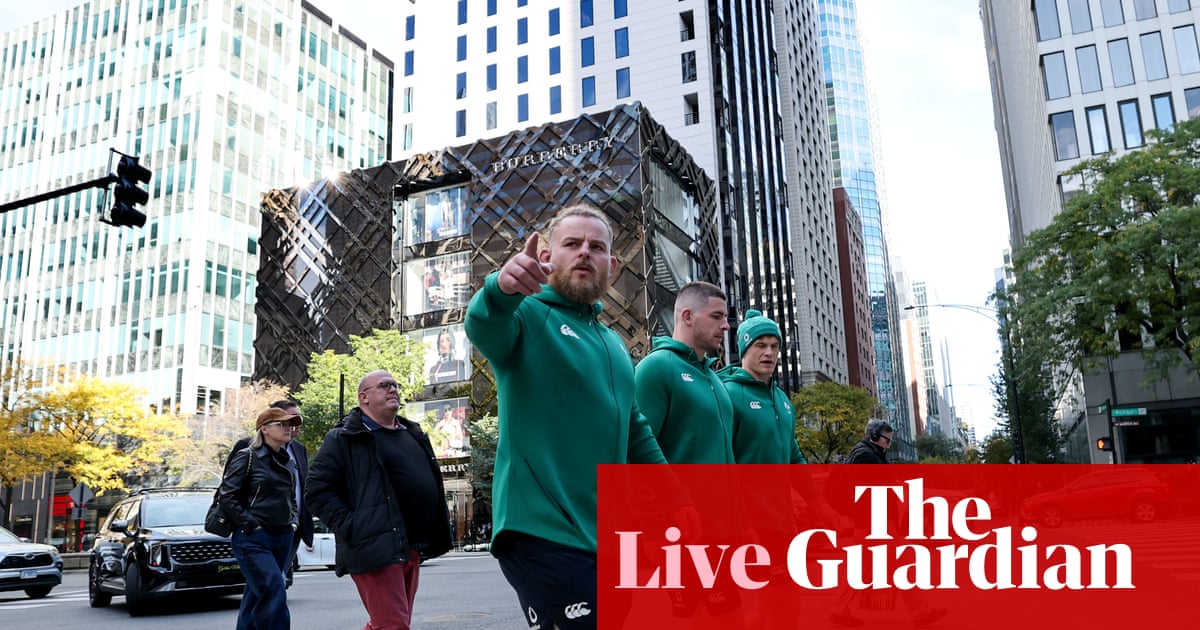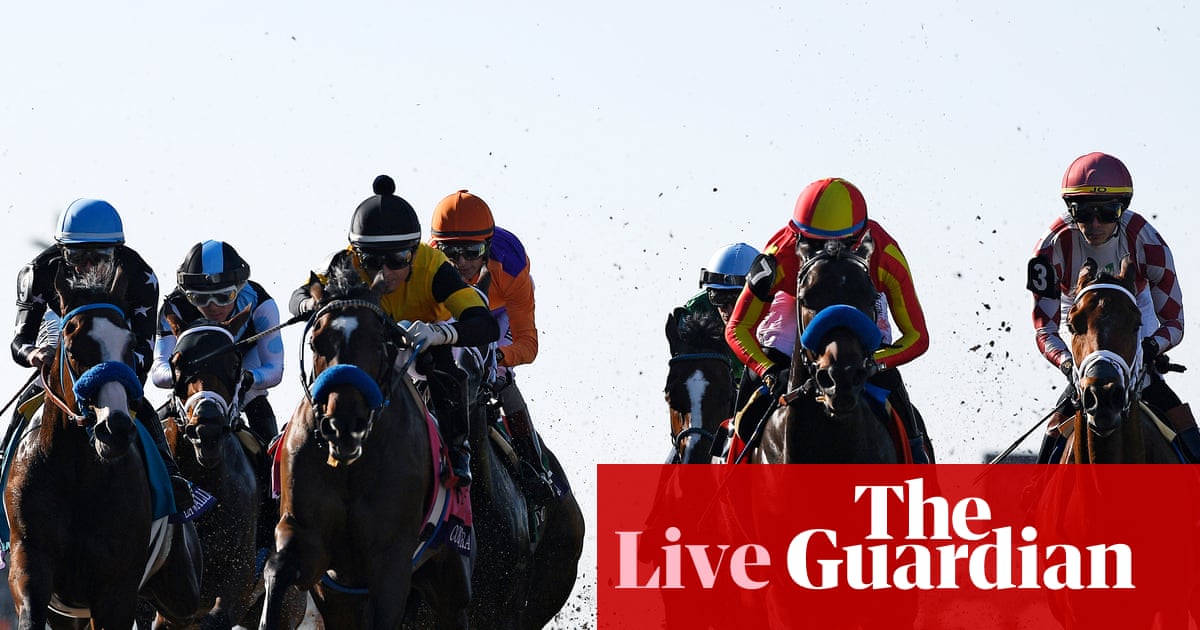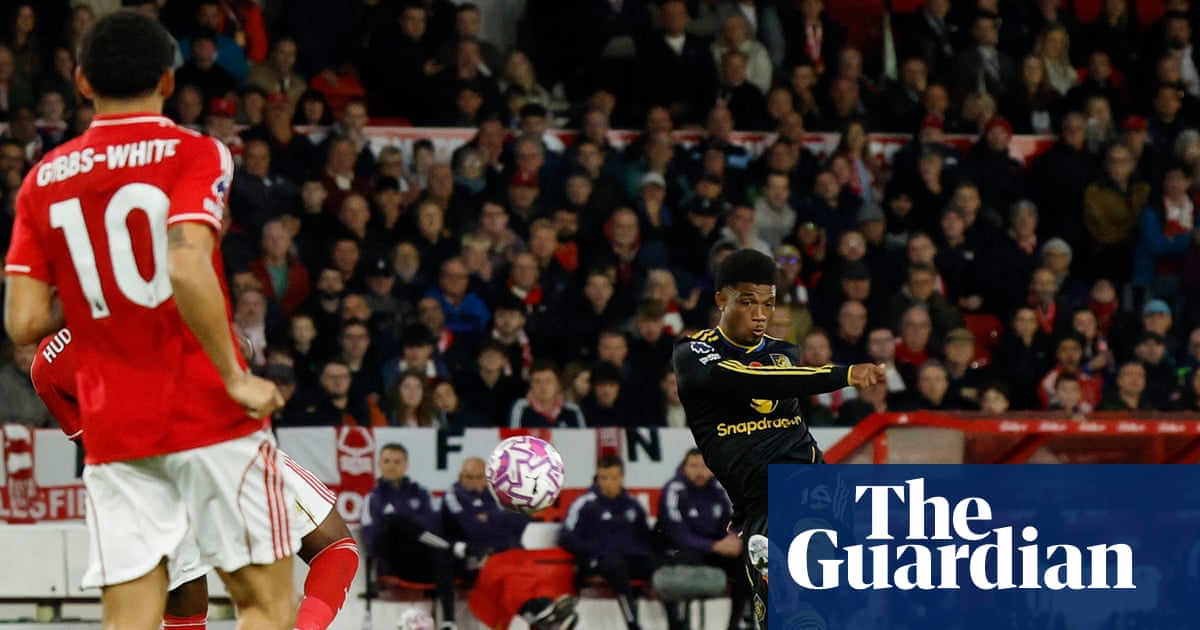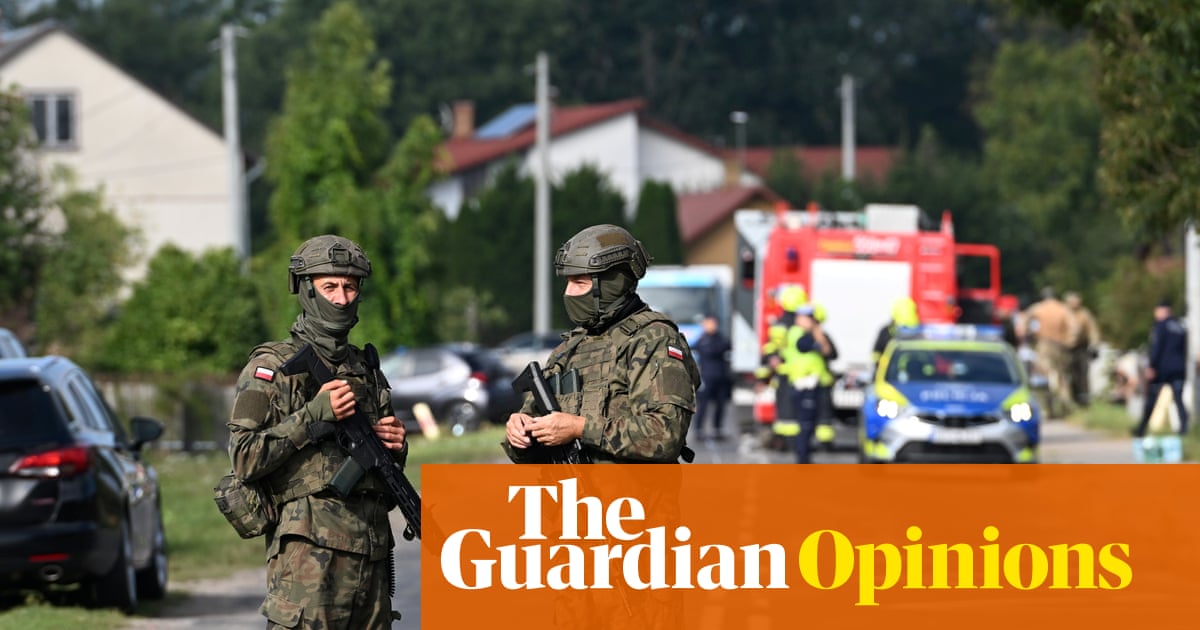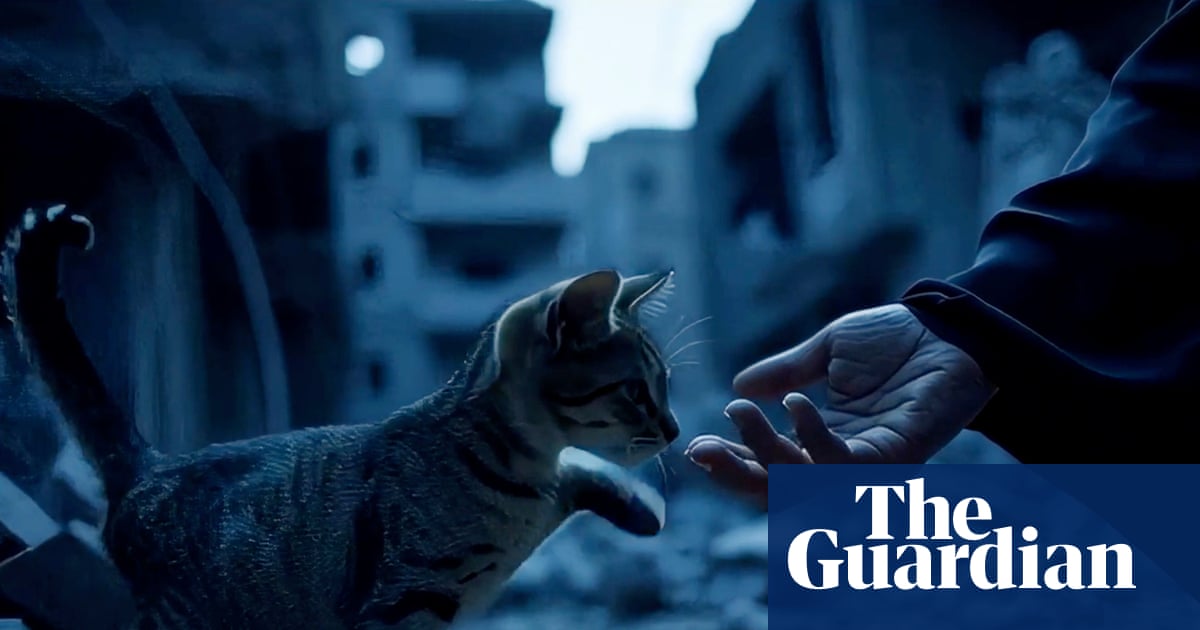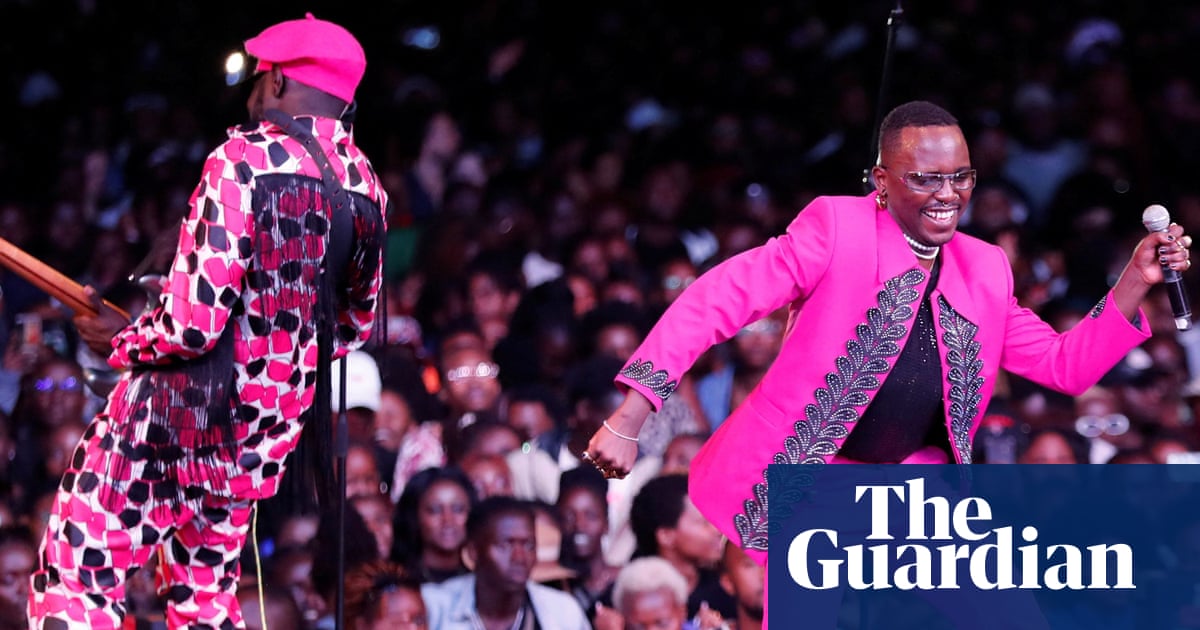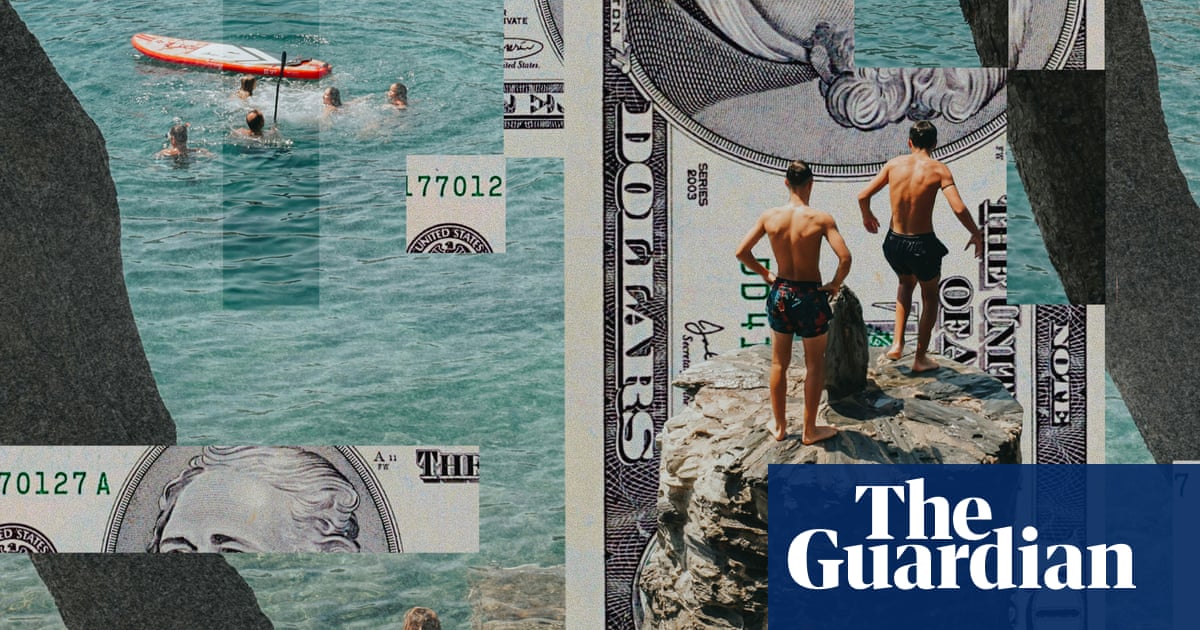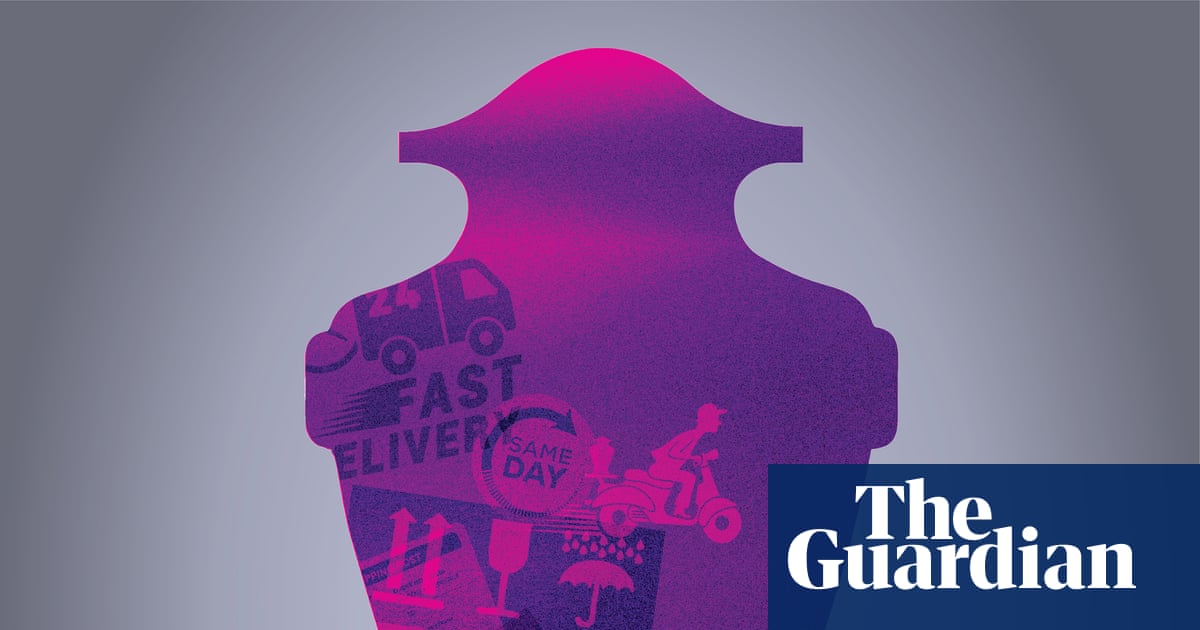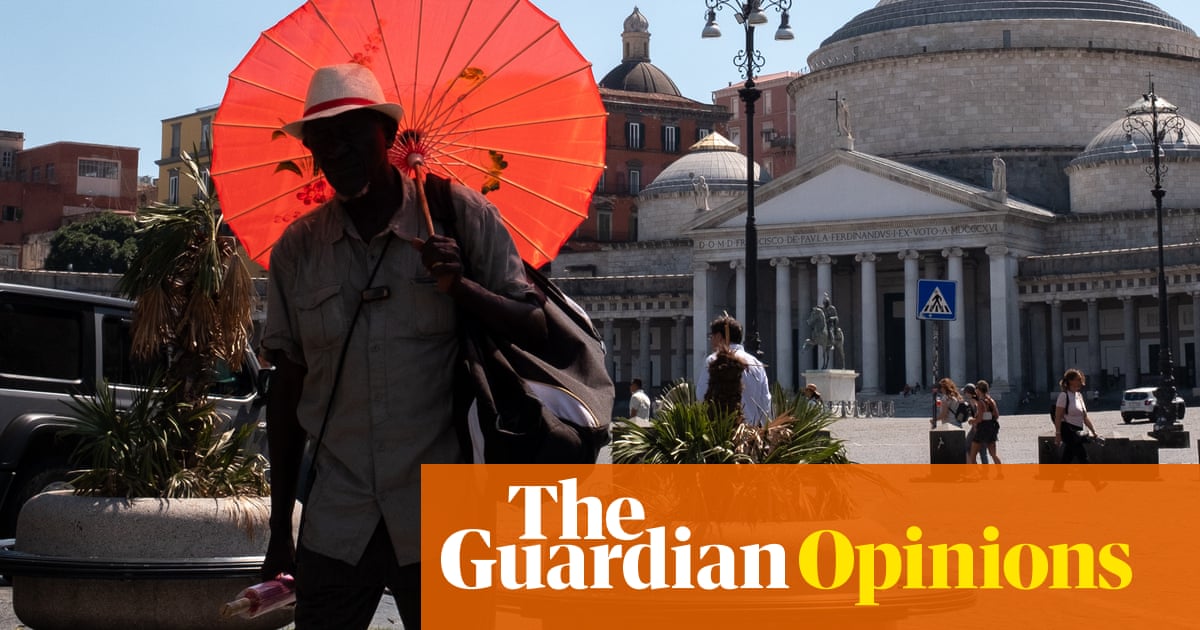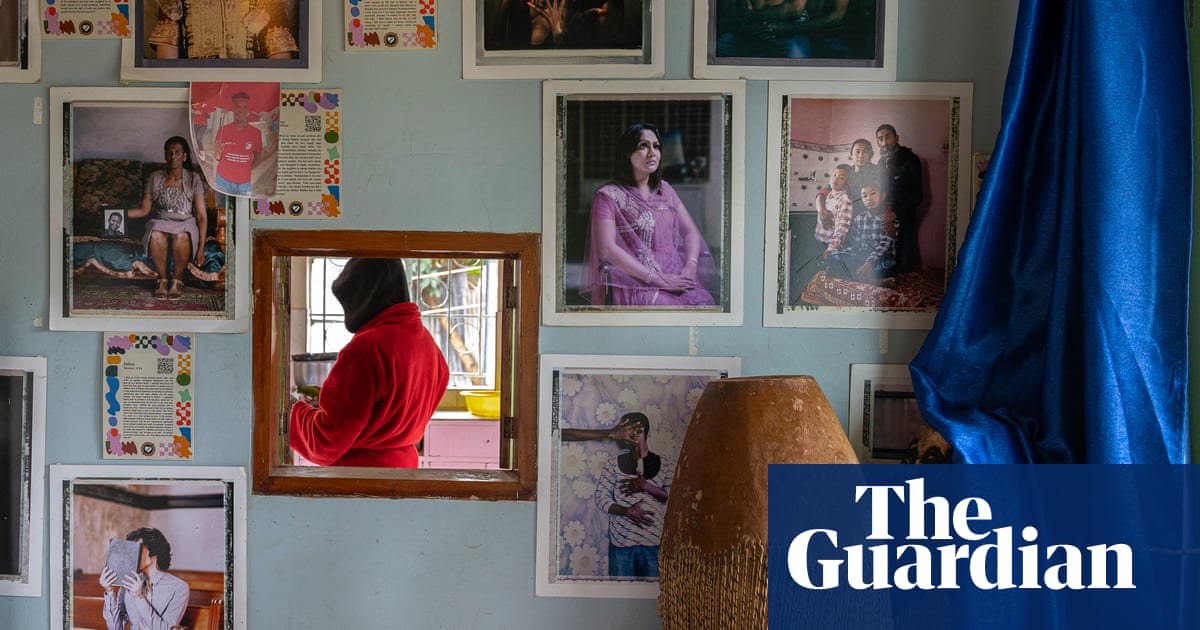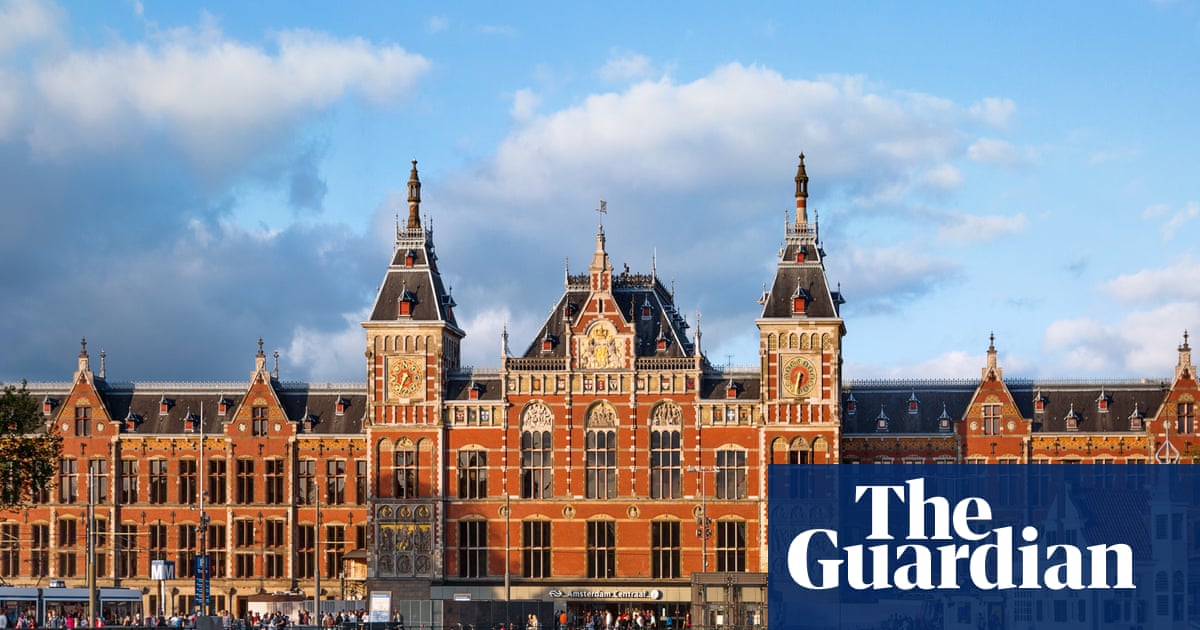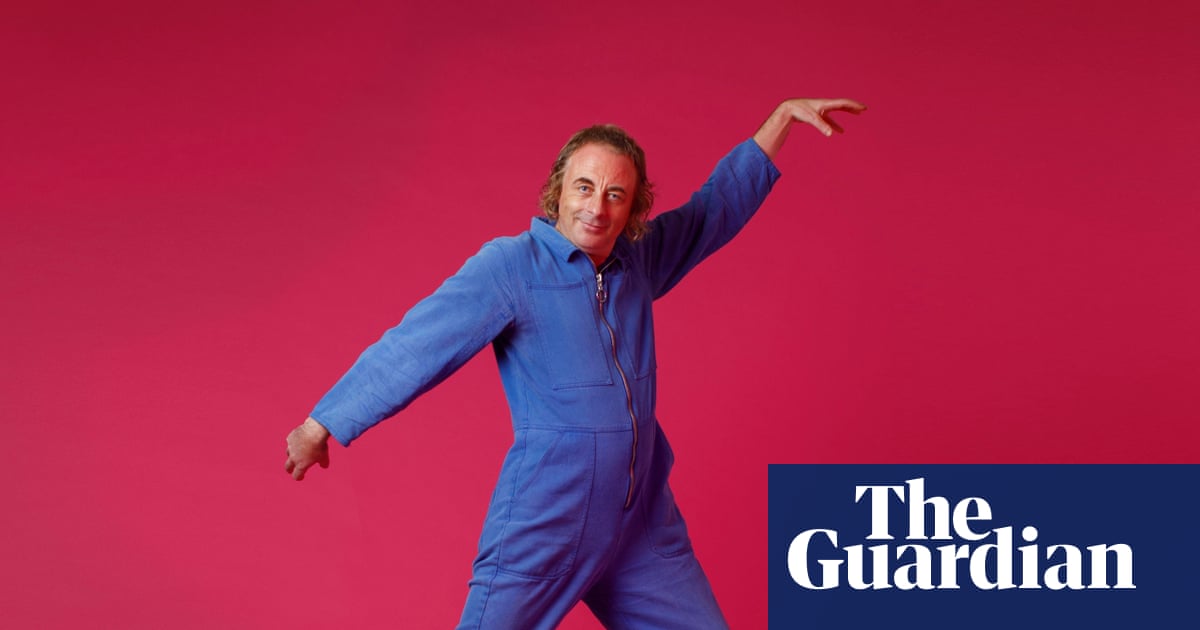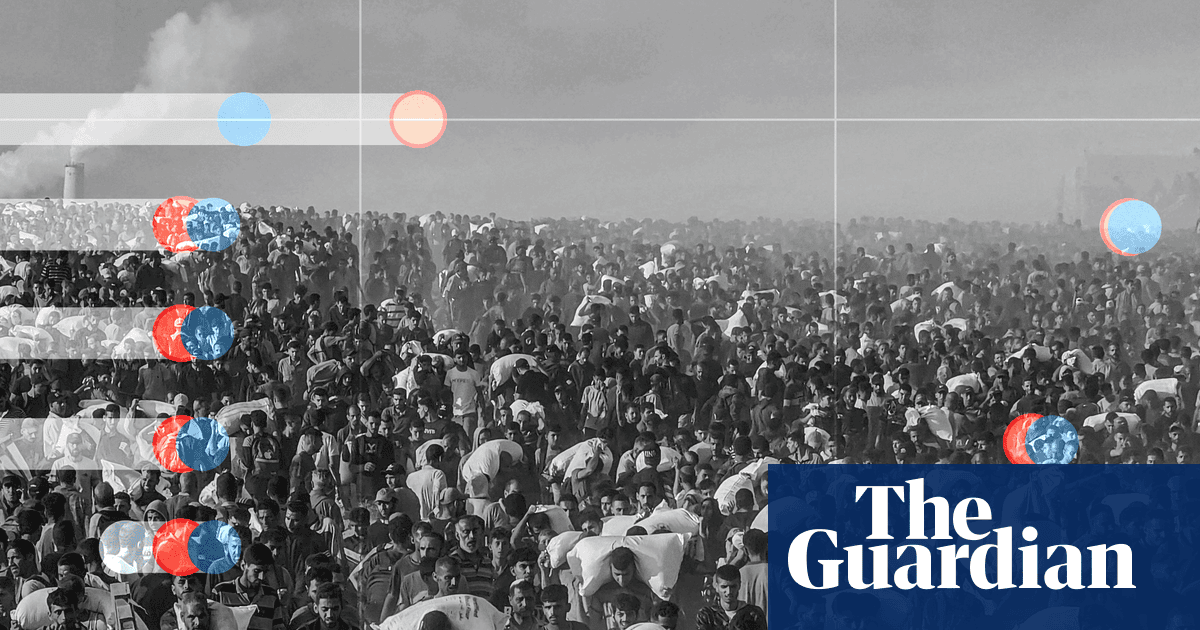Tadej Pogačar’s victory looked certain as he flew up Butte Montmartre for the second of three times on the Tour de France’s final stage. His lead in the race’s general classification (GC) stood at four minutes and 27 seconds over Jonas Vingegaard, more than 10 minutes clear of everybody else, and GC times had been frozen for the final stage. He had won four stages already; that he hadn’t won at least six seemed more his choice than anybody else’s. There was no need to be at the front here, to add a fifth cherry atop the ice cream, but Pogačar’s unquenchable competitive spirit demanded an attempt. He stamped on his pedals on the cobblestoned hill, scything riders off the back of the bunch. By the time he crested Montmartre, he had just four others for company.
Among them were the American Matteo Jorgenson and Wout van Aert, both of Vingegaard’s Visma Lease-a-Bike team. Thanks to superb climbing performances and helming the deepest team in the race, Vingegaard managed to defeat Pogačar at the 2022 and 2023 Tours de France – given Pogačar’s dominance since, these Tours now feel like distant memories from an obsolete world. Back then, Visma used Pogačar’s raw aggression against him. With the knowledge that he would respond to every acceleration, Vingegaard and his teammates threw jab after jab and Pogačar exhausted himself trying to counter with haymakers.
Pogačar – already an all-time-great cyclist – responded by simply eradicating any trace of weakness. In the 2024 Tour and the first 20 stages of the 2025 event, Pogačar looked invincible. He hadn’t been dropped once. Most teams didn’t even think of trying to unseat him, so pointless their resistance would be. The peloton can resemble a living thing, a giant vibrating insect with shimmering, multicolored scales. For all its beauty, no part of it stood up to Pogačar. Vingegaard was the only rider who could feasibly compete. Given how comfortably Pogačar beat him in 2024, he would need even more help from his team than before.
Jorgenson intended to provide just that. It’s baked into his job title, domestique, the French word for servant. If the Tour were a battlefield, the Idaho-bred Jorgenson would be on a suicide mission to engage Pogačar for as long as possible before he inevitably met his end. Any selfish goals he may have had were irrelevant.
For the first four days of the Tour, Visma riders tried to surprise Pogačar with unusually timed accelerations on the flats, on the downhills, and into fierce sidelong wind. Jorgenson, to present a credible dummy target, tried to stick as close as possible to Pogačar in the overall standings. That way, Pogačar would be obligated to follow the American’s attacks as well as Vingegaard’s, leaving him potentially overextended.
Pogačar casually fended off the Visma assault while simultaneously battling Mathieu van der Poel, a far heavier, more natural sprinter, in short dashes to the line. Van der Poel won their first duel on Stage 2; outsprinting him appeared a bridge too far for even Pogačar. All of two stages later, Pogačar exacted revenge. Vingegaard was behind in the sprints, but managed to stay eight seconds behind Pogacar through four stages, and Jorgenson 19. Visma’s plan had yet to produce the desired result, but hadn’t gone badly wrong either.
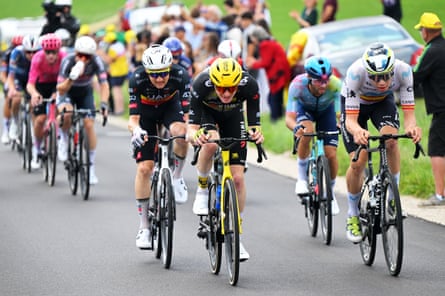
Then on stage five’s time trial, Vingegaard and Jorgenson dropped more than one minute each to Pogačar, rendering all the efforts of the previous four days irrelevant. Stage 12’s hulking Hautacam was the most difficult climb yet; Pogačar chiseled two more minutes out of Vingegaard and 10 from Jorgenson. That was the end of any illusions that Jorgenson could be a general classification contender.
With plan A vaporized, Visma tried to win individual stages. (Their Simon Yates had won stage 10, but it felt almost incidental.) On the queen stage of the race, Jorgenson stuck to the lead group, then formed a breakaway with two other riders as the rest jousted cagily at the foot of the unforgiving Col de la Loze. When Jorgenson fell back midway up the vertiginous slope, it looked like he had been instructed to wait for Vingegaard. Instead, Vingegaard’s group caught him and went past. Jorgenson was empty.
Such was Pogačar’s dominance that when he grimaced in pain while following a Vingegaard attack on Mont Ventoux, I felt a genuine, if pathetic, thrill. Pogačar had shown so little mortality on the preceding stages that he had shifted the benchmarks for entertainment. In lieu of seeing him get dropped, I would accept a warped facial expression. It allowed a momentary dream of tighter competition before Pogačar whizzed clear on yet another sprint.
Jorgenson’s plight seemed even direr than Vingegaard’s, who had seen his once-brilliant rivalry with Pogačar decimated by the latter’s evolution. Though he failed to land a single meaningful blow on his foe, Vingegaard’s efforts earned him praise. Jorgenson, meanwhile, disappeared silently on the slopes each day. He was emptying his reserves on stage after stage, seemingly to little effect for a hopeless purpose. With two stages left, Jorgenson admitted he had been tussling with bronchitis the previous week. What was this tall, sick man doing, trying to climb as fast as the wraiths around him?
In 2023, Sepp Kuss, Visma’s most dependable domestique, rode his way into the red leader’s jersey at the Vuelta a España. Though he wasn’t the best rider on his team, it stood to reason that Visma would throw their weight behind him given his lead. They eventually did, helping ensure Kuss’ victory, but not before team leaders Vingegaard and Primoz Roglic initiated infighting that suggested they would rip the jersey from Kuss’ back if given the chance.
“I had to give something up of my own ambitions to help them,” Kuss later said of his years as a domestique. “Whether they needed my help or not, I don’t know. Maybe they never did.” He laughed, but beneath the mirth is a frightening sentiment: the idea that those generous, painful sacrifices made no difference. At this year’s Tour, Jorgenson looked into a darker crisis – Vingegaard needed all the help he could get, and Jorgenson couldn’t give it.
Maybe he could help someone else. With Vingegaard’s GC bid doomed, Visma aimed at securing a final stage win, likely with Wout van Aert, whose plentiful horsepower suited short, punchy climbs like Montmartre. On the flats ahead of the third trip up Montmartre’s jangly cobbles, Jorgenson began attacking the group. Pogačar followed each time, but on a slight delay. It was as if his legs needed a few seconds to overcome their fatigue before spurring into blurred motion. Though Visma’s pecking and poking throughout the Tour hadn’t resulted in any time profits, they had contributed to exhausting Pogačar. Jorgenson remained deathly loyal to that tactic. But still Pogačar had the energy to take the lead on the climb itself and further whittle down the survivors.
As the top of the hill approached, van Aert suddenly thundered ahead of Pogačar, pushing his pedals so hard I could imagine the bike frame snapping beneath the strain. As van Aert sustained his violent effort all the way up, gradually, impossibly, Pogačar fell behind. Jorgenson had finally taken enough bites out of him that somebody else could draw blood, he’d shown that Pogačar still could bleed.
Van Aert joyfully coasted across the finish line well ahead of the others, who, realizing the futility of chasing the rocket in front of them, had given up the chase. Pogačar rolled through the line with a finger held aloft in celebration of his fourth Tour de France victory. Jorgenson followed behind quietly, his agonizing, selfless job done and done well.

 3 months ago
44
3 months ago
44
